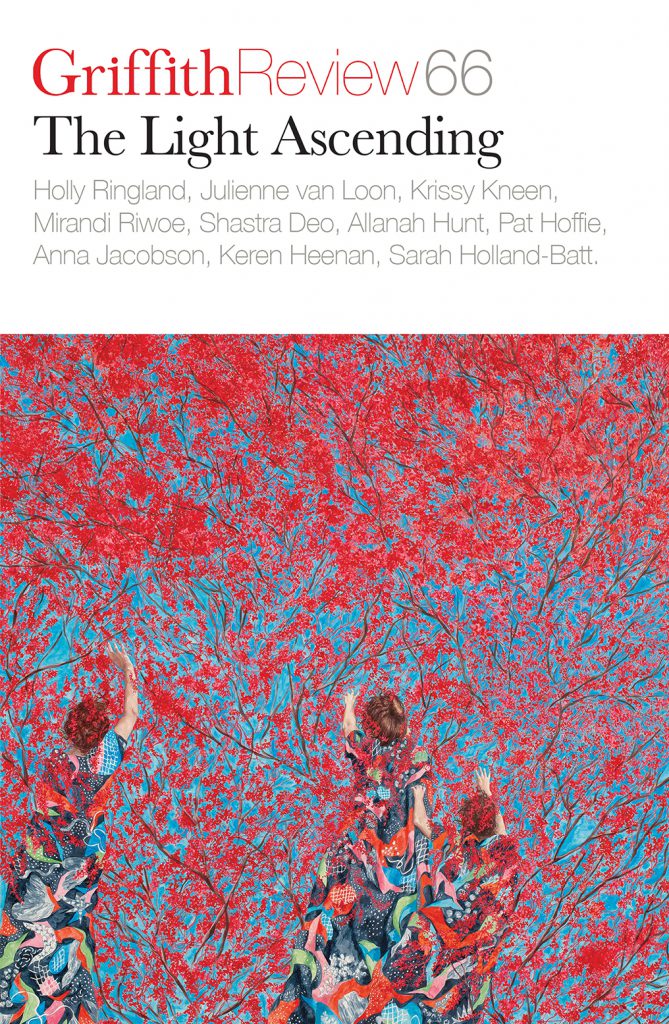On ‘Kurlumarniny’ and ‘Yijarni’: Two books in language
A special series in celebration of the International Year of Indigenous Languages
Featured in

- Published 20191105
- ISBN: 9781925773804
- Extent: 264pp
- Paperback (234 x 153mm), eBook
Aboriginal and Torres Strait Islander readers are advised that this essay contains the names of people who are deceased.
Monty Hale (Minyjun), Kurlumarniny: We come from the desert, edited by Anne Scrimgeour, transcribed and translated by Barbara Hale and Mark Clendon (Aboriginal Studies Press, 2012)
Yijarni: True stories from Gurindji country, edited by Erika Charola and Felicity Meakins, transcribed and translated by Erika Charola, Felicity Meakins, Norm McNair, Helen McNair, Ena Oscar Majapula Nanaku and Sarah Oscar Yanyjingali Nanaku (Aboriginal Studies Press, 2016)
THESE TWO BOOKS, large in scope and size, are published with their original language and the English translation presented side by side. The translations are eloquent and powerful, and both languages have online resources available for the more immersive English-speaking reader. Above all, these books are linguistic legacies for Nyangumarta and Gurindji speakers and readers, a vital recording of history, and a great act of continuing language acquisition and fluency. They document the years before and during the monumental Pilbara station workers’ strike of 1946 in Western Australia and the subsequent Wave Hill Walk-off of 1966 in the Northern Territory. These two strikes formed the foundation of the land rights movement in Australia. The books cover the stories of those who took part in the strikes, the culture that has survived in those areas, and the struggle of living through decades of harsh WA and NT laws and policies.
Monty Hale’s (Minyjun’s) Kurlumarniny: We come from the desert is an autobiography that Minyjun began in 1979, writing fluently in school exercise books in his Nyangumarta language. It features the memories of a man who lived through a remarkable history. Minyjun tells the stories of the men and women he grew up with: brothers, hunting friends, strike leaders, community members and key supporters. The nine chronological chapters move from Minyjun’s childhood to his later years, and each chapter is bookended by Dreaming stories that illustrate the timeless landscape and enduring culture of his language group.
Minyjun’s family was part of a larger population migration that began in the late nineteenth century and would continue until the 1960s. The Nyangumarta people decided to leave their homelands and travel in small family groups northward to the pastoral regions of the Kimberley. Minyjun and his relatives settled into life with the Nyamal-speaking people on the banks of the Oakover River, and eventually joined the workforce on various cattle stations such as Warrawagine, located on the edge of the Great Sandy Desert. Minyjun’s family, who lived traditional lives, soon moved on to other stations and towns, and Minyjun, like other Aboriginal children growing up on sheep and cattle stations in the 1930s and ’40s, received no formal schooling. Instead, he was trained for life as a stockman; while still a child, he became part of an Aboriginal labour force that was crucial to the operation of the pastoral stations of the time. The chapters covering Minyjun’s childhood are enchanting, relaying stories of mustering, learning language and day hunts for goanna. He laments cultural erosion, giving detailed descriptions of initiation ceremonies, bereavement customs, Dreaming stories, communal family living, and cooking and hunting techniques.
Because of Minyjun’s clear, conversational prose style, the reader feels as though the author is talking to them – like he’s yarning about the vivid details of his life. The core of the book tackles the momentous political and social movements of collective action whereby Aboriginal station workers from the region left their employers in united protest against poor conditions and lack of wages. Minyjun details how the striking workers supported themselves through alluvial mining, organised into business entities and purchased their own pastoral stations. He chronicles the purchase and maintenance of Yurtingunya (Strelley Station), focusing particularly on the development of the Strelley Community School, Australia’s first registered, community-initiated independent Aboriginal school and now the oldest continually operated school of this kind in the nation. Minyjun was instrumental in designing the school’s bilingual program and he taught there for decades.
The book includes photographs and detailed notes on kinship and relational skin names, plus a language, spelling and punctuation guide that explains the treatment of English loan words.
While Minyjun lived to see the publication of his seminal work, he passed away a year after it was released in 2012. Kurlumarniny remains an invaluable living legacy for the Nyangumarta people and their language, and a crucial read for those concerned with the survival of our languages.
Kurilajarrinyiyirni kakarrajarrinyiyirni, kara wirlkijarrinyiyirni Panaka-Panakakarti. Ruka Milpanyiyirnijanaku palanga kartakarrinyiyirni. Marntungu jurtijinkinyiyinganaku ngarparrangupa warrarn. Wurranikinyiyinganaku, ‘purlpi wanikinyiyi walangkarrangu yintanga palanga.’ Wurranikinyiyinganaku, ‘purlpi wanikinyiyi walangkarrangu yintanga palanga. Karlamilyingi wanikinyiyi marrngu purlpi Warnman, Manyjilyjarra, Kartujarra, Pijakarla, Nyangumarta, Ngulipartu, warajanga. Ngurlu yartajinikinyiya Karlamilyingi ngurnarrija yalinyu milpanyikinyi Mangarlapa Yurlparija. Kakarni milpanyikinyiyi Manyjilyjarra; kuluna wanikinyiyi warajanga ngurlukarra. Puntaju yanikinyiyijanaku yalinyjakurnu Wirnpakarti ngurlukarti, palanga wanikinyiyi ngurlukarra. Ngurlu wiyirrjinajalu kulpanyikinyiyi ngurrarrangukarti janamilikarti; palajun wanikinyiyi purlpi kurlumarniny. Manyjilyjarralu marrumanikinyiyijaninyi mitawa Warnman, Nyangumarta, Ngulipartu, Kartujarra, Mangarla, Yurlparija. Puntaju Warnmanju marrumanikinyiyijaninyi mirtawalupa pirirrilu warinypa warinyju muwarrju.’
The next morning they showed us all the waterholes and the country round about. ‘People have been living at the waterholes for a very long time’, they told us. ‘In the old days, Warnman-speaking people, Manyjilyjarra-speaking people, Kartujarra-, Pijakarla-, Nyangumarta-, and Ngulipartu-speaking people, all lived together around Karlamilyi, the Rudall River. When they were preparing for ceremonies at Karlamilyi, Mangarla- and Yurlparija-speaking people came from far away to the north. Manyjilyjarra people came from the east, and they’d all meet up here for ceremonies. And in return, they would go and visit those people up north and stay for ceremonies at Wirnpa. When the ceremonies were over they’d return to their own countries. That’s how our old people lived back then. Manyjilyjarra people sought wives who spoke Warnman, Nyangumarta, Ngulipartu, Kartujarra, Mangarla and Yurlparija, and in return Warnman speakers sought wives and husbands among speakers of all the other languages.’ (Translation)
– Kurlumarniny: We come from the desert, p. 161
YIJARNI: TRUE STORIES from Gurindji country is a collection of thirty-four episodic historical stories collated by twenty-four contributors, including elders, photographers, translators and artists. The Gurindji people became known for their 1966 workers’ strike, the Wave Station Walk-off, led by activist Vincent Lingiari; the strike culminated in the landmark pastoral industry equal wages case and the Aboriginal Land Rights (Northern Territory) Act 1976. This fight for traditional land also entered popular culture through Kev Carmody and Paul Kelly’s 1991 song ‘From Little Things Big Things Grow’. This book illuminates the song’s backstory a thousand fold.
But before the movement and song was the strong Gurindji people, and Yijarni, meaning ‘truly’, features their first-hand accounts and those told to the younger people, the new custodians of story. Seven bilingual chapters; archival and contemporary photography by the great artist, curator and Gurindji woman Brenda L Croft Nangari; artworks created to illustrate the stories on Country; as well as maps and a glossary of the Gurindji language make up this extraordinary tome.
Chapter two, ‘Before the Arrival of Europeans’, tells Dreaming stories: ‘Pulngayit Jangkarni (The Great Flood)’, ‘Waringarri, War Parties’, and tales of mermaids and the formation of the land. Always, there is family at the heart of these stories, and Country is the great provider, with an abundance of crocodile, turtle, goanna and barramundi.
Chapter three, ‘The Killing Times’, is raw and unwavering, a harrowing documentation of the brutality meted out to the Gurindji people. As Ronnie Wavehill recounts: ‘They just massacred them on their own country. And what for? Because kartiya came and found a big mob of ngumpin living here on this country. They had to shoot them… They cut them down on their own country.’ (Translated)
In the same chapter, Violet Wadrill sits down with her granddaughter Leah Leaman and describes the massacre that took place near Warluk. There is a photograph of the two women alongside this account and it is one of the most haunting images in the book, as though the weight of the world is being exchanged between Violet and Leah in that moment.
Other chapters cover life at Malyalyimalyalyi/Lipanangku (the original Wave Hill Station) and Jinparrak (the second station, established in 1924 following a flood), an account by Vincent Lingiari about the station working conditions under Lord Vestey, and stories about early policemen and trackers. Throughout the book, there are fascinating recollections of hunting, ceremony and family bonds, alongside tales of aeroplane sightings and interactions with Afghan settlers and stockman. Yijarni is a celebration of culture, country and language, of Aboriginal activism and the trade union movement, of standing up to systemic racism and oppression. At its heart, this is a book about truth-telling; about the impact of genocide in the Tanami Desert; about listening to what has come before in order to know where to go today.
I yurrk this story, they bin yurrk la me, ngayiny-ju jawiji-lu, father-ngku, kaku-ngku-ma nyampa – you know anything. ‘Nyawa karrwa nyawa – you wanna look la any kartipa, or anyone-ku manyja-yina, kula-n karrwa nyuntu-rni.’ Yijarni ngurna marnana nyawa, jalarni yijarni.
I’m telling the stories they told to me: my father, my father’s father, my mother’s father and whoever else. They told me, ‘Keep these stories here and pass them on to anyone, whitefellas and all. Tell the stories! Don’t keep them to yourself!’ So it’s true what I’m telling you here, it’s still true today. (Translation)
– Ronnie Wavehill Wirrpngayarri Jangala, Yijarni: True stories from Gurindji country, Introduction
Share article
More from author

2019: Future voices
Archie Roach and Jack Charles…shared the stage that night. This was an important moment for literature, too – these two men would both release memoirs in the following months about their triumphs and disasters, their pain and survival: Jack Charles’s Born-again Blakfella (Viking) was released in August, and Archie Roach’s Tell Me Why: The story of my life and my music (Simon & Schuster) was released in November. Both became instant bestsellers.
More from this edition

Can you hear me now?: 2008–2018
GR OnlineAboriginal and Torres Strait Islander readers are advised that this essay contains the names of people who are deceased. THIS PERIOD BEGAN with Waanyi author Alexis Wright winning the...

Orison
PoetryThree days later, we bought a Newton’s cradle. Put it on the table, and heartsick, tried to click click click our way out of it. But there are...

Q&A
Poetry[What are some common sources of light?] And, can light survive exposure to extreme temperatures? These are both questions we are interested in. Our goal for...